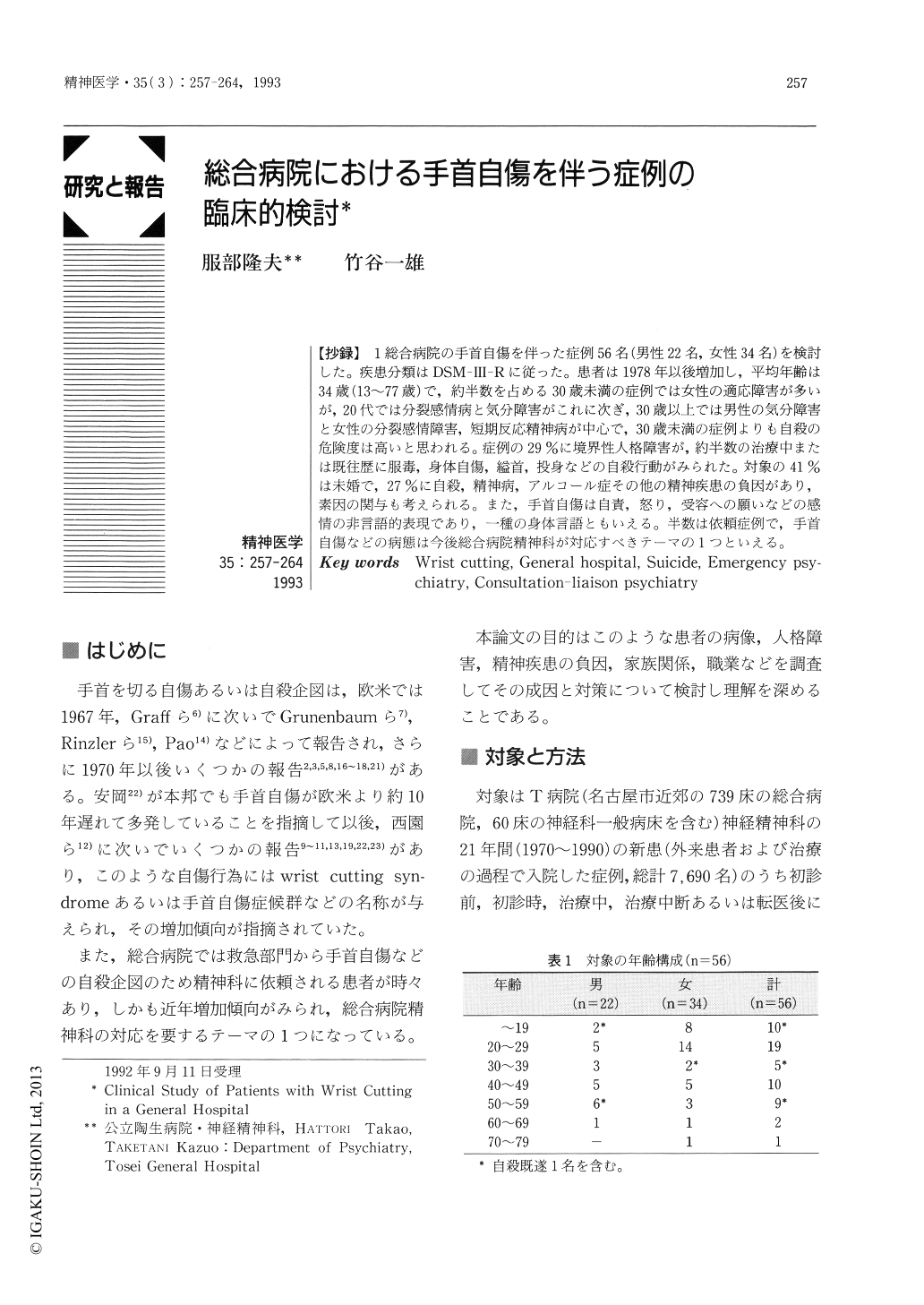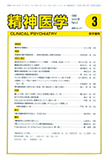Japanese
English
- 有料閲覧
- Abstract 文献概要
- 1ページ目 Look Inside
- サイト内被引用 Cited by
【抄録】 1総合病院の手首自傷を伴った症例56名(男性22名,女性34名)を検討した。疾患分類はDSM-Ⅲ-Rに従った。患者は1978年以後増加し,平均年齢は34歳(13〜77歳)で,約半数を占める30歳未満の症例では女性の適応障害が多いが,20代では分裂感情病と気分障害がこれに次ぎ,30歳以上では男性の気分障害と女性の分裂感情障害,短期反応精神病が中心で,30歳未満の症例よりも自殺の危険度は高いと思われる。症例の29%に境界性人格障害が,約半数の治療中または既往歴に服毒,身体自傷,縊首,投身などの自殺行動がみられた。対象の41%は未婚で,27%に自殺,精神病,アルコール症その他の精神疾患の負因があり,素因の関与も考えられる。また,手首自傷は自責,怒り,受容への願いなどの感情の非言語的表現であり,一種の身体言語ともいえる。半数は依頼症例で,手首自傷などの病態は今後総合病院精神科が対応すべきテーマの1つといえる。
A total of 56 patients with wrist-cutting behavior were investigated and classified according to the DSM-Ⅲ-R. Two males and 1 female succeeded in commiting suicide. The average age was 34 years, with an age range of 13~77 years. Among the patients under 30 years old, with a male female ratio of 1 : 3.14, half of the total subjects had adjustment disorders most frequently, followed by mood disorder, psychotic disorders not elsewhere classified, and other illnesses. The other half of the 30 year-old and over population had a male female ratio of 1 : 0.80, and mood disorder was most frequent, followed by psychotic disorders not elsewhere classified and other diseases. Various personality disorders were observed among 23 subjects (41 %), and borderline personality disorder was important in 16 patients (29 %). In many cases, the wrist cutting was associated with suicide attempts by self-poisoning, self-injury, hanging and/or jumping. The occasion for wrist cutting was suspected to be loss of loved ones, aggression, self-punishment, interpersonal conflicts, delusion and other causes, and wrist-cutting was supposed to be a behavior expressing non-verbal communication using the hands, i.e., body language. Suicide, psychoses, alcoholic psychosis and other psychiatric disorders observed in familial anamnesis in 27 % of the subjects suggest that a genetic factor may play a role in suicidal behavior such as wrist cutting. The high referral rate (48 %) of the subjects indicates that wrist cutting will be an important problem in consultation-liaison psychiatry in the future.

Copyright © 1993, Igaku-Shoin Ltd. All rights reserved.


